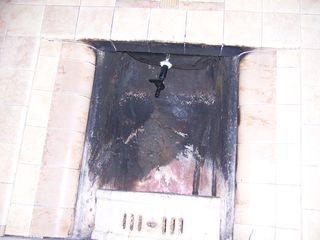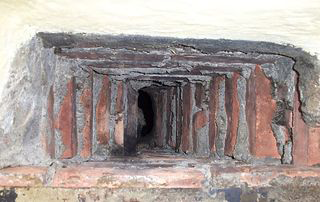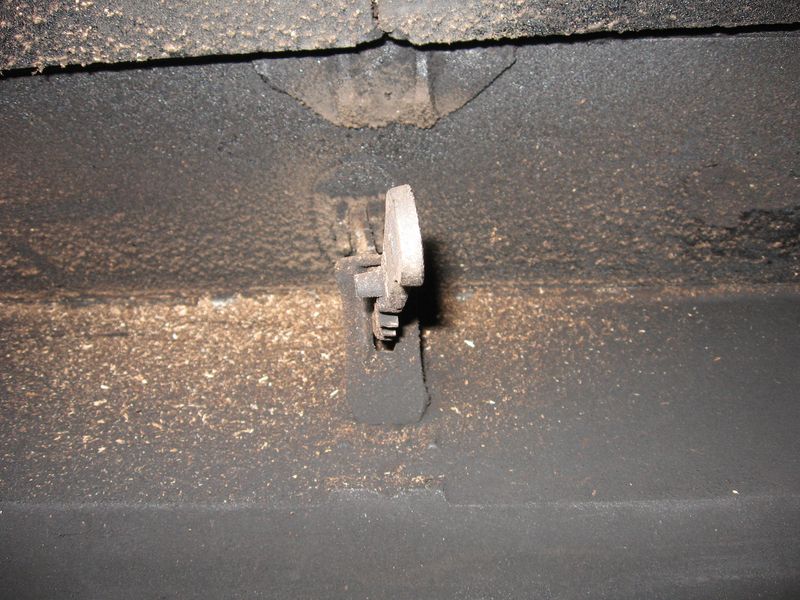
by blogediter | Jun 28, 2019 | Gas Logs, Chimney Plugs, Chimney Problems
Q: Jason, We have a coal-burning fireplace that we will never use. The chimney has a smoke shelf and (as far as I can tell) no damper. The chimney measures 14 X 16 just above the smoke shelf. I guess that means we will need to order a custom Chimney Balloon. How much would that cost and how do we go about doing it? – ST
A: ST, Just to be on the safe side I would go with a 15”X18” custom Chimney Balloon.
FYI, If your smoke shelf is far up your chimney you can also measure the space below the smoke shelf and before the damper if that allows enough space for the Chimney Balloon. The most important thing is to look for the most convenient space to reach. If the best location is higher than 12 inches past where you can touch with your hand, consider purchasing an HEK Extender with your Chimney Balloon. – Jason

by blogediter | Aug 24, 2018 | Gas Logs
Bath Yellow Fireplace
Q: Jason, My wife and I recently bought a fixer-upper and are almost ready to move in. We knew that we had to do some work to our brick wood burning fireplace, and have been really swaying toward putting in a gas direct vent insert. When I looked up into the flu I was surprised to see that we don’t have a damper AT ALL. The previous owners had removed it leaving us with a 1′ x 2′ opening going up into our flu. My question is, will the Chimney Balloon work for me if I want to convert my existing fireplace into a directly vented gas log? -JD
A: Dear JD, Considering the outside temperature isn’t getting any warmer at this time of year, I would suggest you get a Chimney Balloon in this fireplace very soon so you won’t be loosing your interior heat up the flue.
It could be that the previous owner had a vented gas log in this fireplace when he lived there (he must have taken it with him) and that is why the damper was removed. Building code states that a vented gas log fireplace must have the metal damper removed or clipped open regardless if the fireplace is in use or not.
The reason for this code is to keep people with vented gas logs from accidentally asphyxiating the occupants of the home by burning the gas log with the damper closed. The side effect of this building code is wholesale heat and A/C loss 24/7 through the flue.
Many vented gas log owners opt to use a Chimney Balloon in the flue to stop the heat and A/C loss. If they accidentally light the gas log before manually removing the Chimney Balloon it is designed to shrink and burst and still allow the fireplace gasses to escape. This saves the occupants of the home but sacrifices the Chimney Balloon.
When you install a direct vent fireplace insert I suggest you have it vented through the wall and have the flue plugged with a Chimney Balloon. Even if you decide to wait on upgrading the fireplace get that balloon in right away. If you decide to vent the new direct vent gas fireplace up the chimney, you will still have to work out some way to plug the rest of the flue around the vent pipes. – Jason

by blogediter | Aug 9, 2017 | Chimney Problems
Why do Dampers Leak Cold Air Even When They Are Closed?
Fireplace dampers are a 300+ year old invention. They are not much different today than they were 300 years ago. Here are 6 reasons dampers leak cold air:
- Dampers and their frames are made of cast iron or sheet metal, so even a brand new damper that has never been used is leaky. The metal on metal contact points do not close perfectly, and you cannot have weather stripping on a damper door or it will burn off when you use the fireplace.
- Dampers are heated unevenly with an open flame on a regular basis. This is a recipe for metal warping.
- Dampers conduct heat and cold because of their solid metal construction. There is no insulation or R-value to a damper door.
- Dampers get coated with creosote and soot. This coating tends to build up and cause a crust that further foils the metal on metal contact points. This crust can be removed with some scrubbing, but even chimney sweeps rarely spend time cleaning the damper itself. They just scrub the flue and smoke chamber.
- The hinges on a damper are crude mechanical devices usually consisting of two interlocking fingers or just a pivot point. They are not continuous like a piano hinge. If you push on the hinge side of a damper door, you will see there is not much holding it together.
- If you have a vented gas log that was professionally installed, the damper was blocked open or removed. According to code, when a gas log is installed the damper must be locked in a fully open position. This causes an enormous amount of heat loss.
As you can see, dampers are poorly designed to serve as a dam to hold back your interior heated air and to keep cold outside air from seeping in. Using a product like a Flueblocker, a Chimella or a Chimney Balloon in your dormant fireplace can go a long way to stop heat loss, make your home less drafty, and save money on heating and A/C bills.


